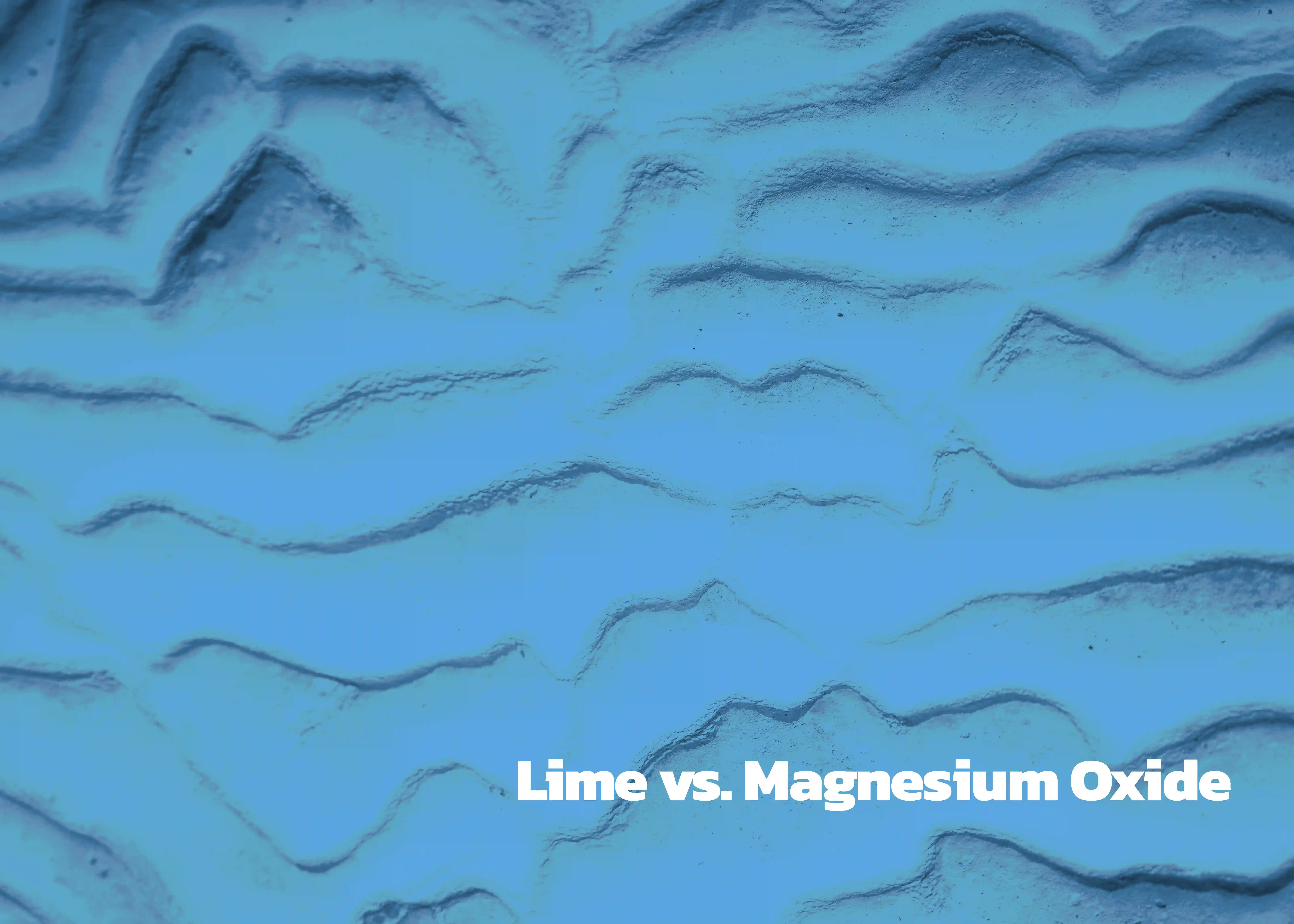When a tailings dam fails, the consequences are swift and severe. Acidic, metal-laden water can surge into surrounding rivers and communities, posing an immediate threat to ecosystems and public health. The standard emergency response is to apply lime, neutralizing acidity and precipitating contaminants. But is lime always the best option? Emerging evidence suggests that magnesium oxide (MgO), often deployed as a slurry, may offer important advantages—particularly in stabilizing water quality for the long term.
The February 2025 Chambishi Mine disaster in Zambia provides a telling example. Following the breach of a tailings dam at the Sino-Metals Leach plant, millions of liters of acidic water containing copper and other heavy metals spilled into the Kafue River. Authorities responded by deploying aircraft and boats to spread hundreds of tons of lime across the river’s surface. This immediate action neutralized acidity and precipitated metals, but it also generated large volumes of sludge and risked overshooting pH to levels harmful to aquatic life.
Against this backdrop, it is worth comparing lime and magnesium oxide head-to-head in terms of treatment performance, safety, cost, and environmental footprint.
Neutralization and Buffering
Lime (CaO or Ca(OH)₂) dissolves quickly and can push water pH up to 12. This rapid response is ideal for an emergency, but it has drawbacks. Overshooting into the highly caustic range can harm aquatic organisms and even re-dissolve certain amphoteric metals, such as lead and zinc, as soluble hydroxo-complexes. Once the immediate reaction is over, lime offers little buffering capacity, meaning the system remains vulnerable to re-acidification.
Magnesium oxide (MgO) behaves differently. When slurried in water, it forms magnesium hydroxide (Mg(OH)₂), which dissolves slowly and naturally buffers water around pH 9–10. This range is optimal for precipitating most heavy metals while avoiding caustic extremes. Because MgO dissolves only as needed, it maintains a steady alkalinity and provides protection against future acid inputs. Studies on mine tailings have confirmed that MgO-amended materials are more resistant to re-acidification than those treated with lime.
Heavy Metal and Arsenic Removal
Both lime and MgO neutralize acidity and precipitate metals as insoluble hydroxides. However, their removal mechanisms differ:
- Lime acts primarily through precipitation. While effective, its tendency to overshoot pH can undermine removal efficiency for amphoteric metals.
- MgO combines precipitation with adsorption. Magnesium hydroxide particles provide surface sites that adsorb metal ions, achieving more complete capture. Comparative studies have shown MgO achieving up to 99% removal of copper, zinc, lead, manganese, and iron—outperforming lime and other neutralizing agents in side-by-side trials.
For arsenic, both reagents can precipitate sparingly soluble arsenates (calcium arsenate or magnesium arsenate) and encourage adsorption onto hydroxide solids. MgO’s stable pH conditions support consistent arsenic removal, whereas lime’s extremes may reduce reliability.
Sludge Generation and Stability
Emergency neutralization inevitably produces sludge, but the volume and characteristics differ significantly between lime and MgO.
- Lime creates large amounts of fluffy, gypsum-rich sludge due to calcium sulfate precipitation in sulfate-bearing waters. This sludge has high water content, settles poorly, and is expensive to dewater and dispose of. In river systems, lime sludge can smother habitats and pose long-term management challenges.
- MgO avoids gypsum formation entirely, since it introduces no calcium. Sulfate remains dissolved as magnesium sulfate, while metals precipitate as hydroxides. The resulting sludge is denser, settles faster, and is produced in far smaller volumes—often 50–80% less than lime. Importantly, MgO-stabilized sludges are less prone to re-dissolving under acidic conditions, offering greater long-term security.
Prevention of Re-Mobilization
One of the greatest risks in tailings remediation is that neutralized metals may return to solution over time.
- With lime, once the initial alkalinity is consumed, pH can drop, and previously precipitated metals may leach back into the water.
- With MgO, the buffering action continues as long as unreacted particles remain, neutralizing new acidity and maintaining metals in insoluble forms. This self-buffering property makes MgO-treated systems more robust against future acidification events.
Safety and Handling
Safety during emergency deployment is paramount.
- Quicklime is hazardous. Its reaction with water is highly exothermic, releasing heat that can cause burns. Lime dust is caustic and harmful if inhaled, and the slurry is corrosive to pumps and pipelines. Storage is also challenging, as lime absorbs moisture and carbon dioxide from the air, leading to clumping and degradation.
- Magnesium hydroxide slurry is significantly safer. It is classified as non-hazardous, non-toxic, and only mildly caustic. It does not generate heat on contact with water and is far less corrosive to equipment. Handling risks are minimal, making it easier to deploy quickly in the field with lower requirements for protective gear and infrastructure.
Cost Considerations
At first glance, lime appears cheaper due to its lower purchase price. However, the total cost of ownership tells a different story:
- Lime requires higher dosages, generates large sludge volumes, and drives up disposal and maintenance costs.
- MgO, while more expensive per tonne, has higher neutralizing capacity per unit weight, uses less reagent overall, and avoids gypsum sludge. Facilities using magnesium hydroxide often report long-term cost savings once sludge handling, maintenance, and compliance are factored in.
In short, MgO can be cost-competitive—or even more economical—despite its higher upfront price.
Environmental Footprint
From a sustainability perspective, both lime and MgO are produced through calcination, which carries a carbon footprint. But the downstream impacts diverge.
- Lime treatment produces large volumes of waste sludge that must be dredged, transported, and disposed of as hazardous waste. It can overshoot pH, causing ecological harm.
- MgO treatment minimizes waste generation and maintains a safe pH range for aquatic organisms. Magnesium and sulfate residues are naturally occurring ions with low toxicity, and unreacted MgO remains as a benign buffer.
Some MgO products can even be sourced from industrial by-products, aligning with circular economy principles.
Choosing the Right Tool in a Crisis
The Chambishi response illustrates why lime remains the default choice: it is widely available, inexpensive, and acts fast. In the critical first hours of a tailings spill, these advantages are decisive. But looking forward, magnesium oxide deserves serious consideration as an alternative or complementary strategy.
By providing stable pH control, reducing sludge, improving safety, and offering more sustainable long-term immobilization of contaminants, MgO represents a more advanced and resilient approach to emergency mine water treatment.
Final Thoughts
Tailings dam failures demand urgent action. In such moments, lime is a reliable emergency neutralizer, but it is also a blunt instrument that creates its own challenges. Magnesium oxide offers a more refined tool: one that not only stops the immediate crisis but also guards against the long-term risk of contaminant re-mobilization.
For mining companies and regulators facing the reality of aging tailings infrastructure and rising environmental scrutiny, the message is clear. The time has come to expand the toolkit beyond lime. Magnesium oxide should be on the table—not just as a theoretical option, but as a practical, field-ready alternative for safeguarding rivers and communities when disaster strikes.

